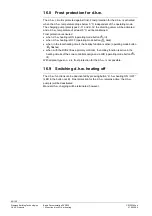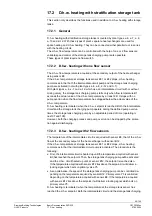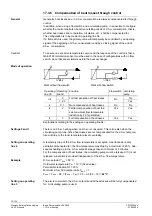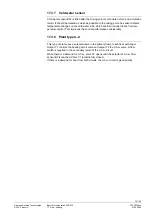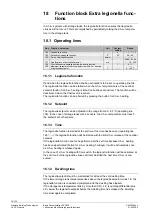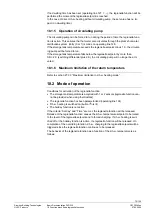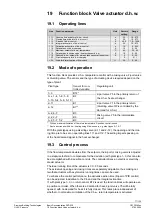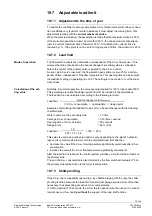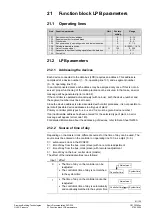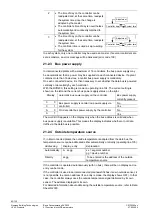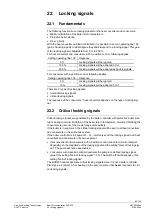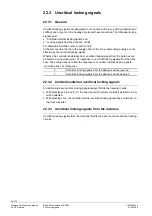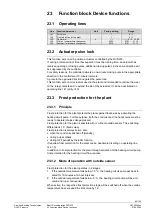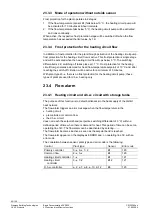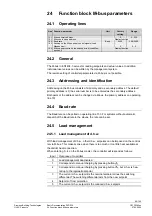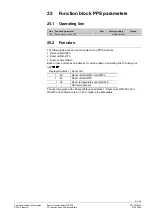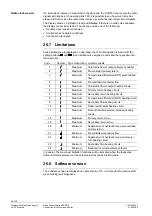
79/130
Siemens Building Technologies
Basic Documentation RVD230
CE1P2383en
HVAC Products
19 Function block Valve actuator d.h.w.
27.05.2004
19.7 Adjustable load limit
19.7.1 Adjustment to the time of year
To enable the controller to also provide stable d.h.w. temperature control when connec-
tion conditions vary (summer / winter operation) it must adjust the running time. This
adjustment is made with the
current maximum stroke
.
When the plant is started up, the assumption is made that the maximum stroke be 50 %.
If the controller opens the actuator by more than 50 %, the stroke model continually ad-
justs the current maximum stroke ”towards 100 %". At midnight, the current stroke is
reduced by 1 %. If the plant is not in use for a longer period of time, the minimum is 20 %.
19.7.2 Load
limit
The flow switch delivers fast information, independent of the d.h.w. flow sensor. This
ensures that the entire heat on the heat exchanger’s secondary side is exchanged
before the control of the primary valve is passed to the d.h.w. control.
As soon as d.h.w. is consumed, the flow switch opens primary valve Y5 for a certain
period of time, independent of the flow temperature. This opening time can be set with
the load limit setting on operating line 124. The setting is to be made in % of the maxi-
mum stroke.
Normally, in summer operation, the valve opening required for 100 % load is about 80 %.
This percentage is called the design point and must be included in the calculations.
The load limit can be calculated according to the following formula:
Heat exchanger volume
secondary
Load limit =
∅
d.h.w. consumption × opening time × design point
Example of calculating the load limit to be set for a heat exchanger with the following
characteristics:
Water content on the secondary side
= 1.0 liter
Average d.h.w. consumption
= 0.14 liters / second
Opening time of d.h.w. actuator
= 35 seconds
Design point
= 80 % (0.8)
1,0
Load limit =
0.14 × 35 × 0.8
× 100 = 25 %
This value is used as a guide value and can vary depending on the plant’s hydraulic
layout. It is recommended to start with the calculated load limit and then
•
decrease the value if the d.h.w. flow temperature significantly overshoots after d.h.w.
consumption
•
increase the value if the d.h.w. flow temperature significantly undershoots
After the load limit is reached, the control system will take on control of the actuator on
the primary side.
The end of d.h.w. consumption is also detected by the flow switch and actuator Y5 on
the primary side will be driven to the fully closed position.
19.7.3 Child-proofing
If the d.h.w. tap is repeatedly opened (e.g. by children playing with the tap), the child-
proofing function prevents the load limit function from being executed more often than
necessary, thus preventing excessive d.h.w. temperatures.
If, within a period of 10 seconds, the d.h.w. tap is opened more than twice, the control-
ler will ensure d.h.w. heating
without
the support of the load limit function.
Mode of operation
Calculation of the set-
ting value


